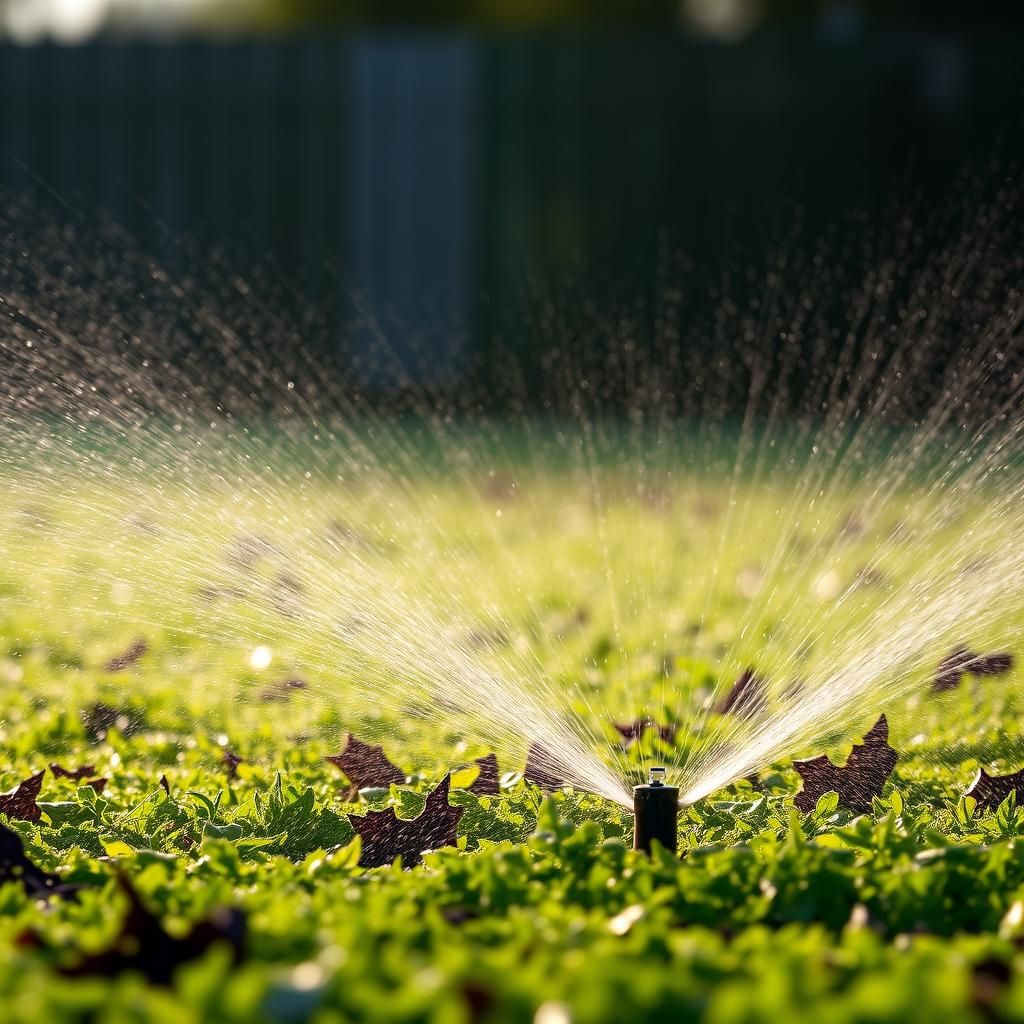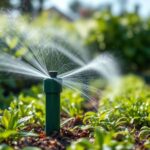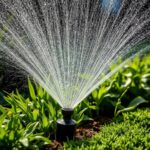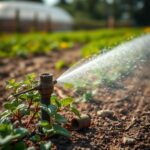What is the Meaning of Irrigation in the Oxford Dictionary? | Comprehensive Explanation and Insights

Irrigation is a vital agricultural practice that ensures the effective distribution of water to crops and soil, playing a crucial role in enhancing food production. The Oxford Dictionary provides a foundation for understanding the term's precise definition and its various applications in agriculture, horticulture, and landscape management. This article delves into the meaning of irrigation as described by the Oxford Dictionary, shedding light on its significance in modern farming techniques, historical evolution, and the environmental implications of water management. Through a comprehensive explanation, we aim to provide valuable insights into the multifaceted concept of irrigation and its practical importance in today's world.
Understanding the Definition of Irrigation in the Oxford Dictionary
Irrigation, as defined by the Oxford Dictionary, refers to the artificial application of water to soil or land to assist in the growth of crops and vegetation. This process can involve various methods, such as surface irrigation, drip irrigation, or sprinkler systems, and is essential for agriculture, particularly in regions where rainfall is insufficient. By ensuring that crops receive adequate moisture, irrigation helps to enhance yield, promote plant health, and sustain farming practices, ultimately playing a vital role in food production and agricultural sustainability.
The Importance of Irrigation
Irrigation is crucial for enhancing agricultural productivity, especially in areas with irregular rainfall patterns. It allows for the consistent supply of water to crops, which helps in maximizing growth and yields. By managing water resources effectively through irrigation systems, farmers can mitigate the effects of drought and ensure a reliable food supply for communities. Furthermore, incorporating modern irrigation techniques can lead to increased efficiency and reduced water waste, making it a cornerstone of sustainable agriculture.
Types of Irrigation Methods
There are several types of irrigation methods that farmers can employ depending on the landscape, crop type, and available resources. Common methods include surface irrigation, where water flows over the field by gravity; drip irrigation, which delivers water directly to the plant roots through a network of tubes; and sprinkler systems, which distribute water through a series of pipes and nozzles. Each method has its advantages and drawbacks, and choosing the right one can greatly impact water conservation and crop productivity.
Historical Development of Irrigation
The practice of irrigation dates back thousands of years, with some of the earliest systems being developed in ancient civilizations such as Mesopotamia and Egypt. These early forms of irrigation involved diverting rivers and designing canals to supply water to fields. Over time, technological advancements have improved irrigation practices, leading to more sophisticated systems that increase water use efficiency and adapt to different agricultural needs. Grappling with historical innovations helps to understand the evolution of modern agricultural techniques.
See also:
Environmental Impact of Irrigation
While irrigation is essential for agricultural productivity, it can also have significant environmental effects. Over-irrigation can lead to soil salinization, which diminishes soil quality and crop yields. Additionally, excessive water diversions from natural water bodies can disrupt local ecosystems and affect biodiversity. However, implementing sustainable irrigation practices, such as rainwater harvesting and efficient water management, can help mitigate these impacts, promoting both agricultural efficiency and environmental stewardship.
Future Trends in Irrigation Technology
The future of irrigation technology is trending towards more sustainable and efficient practices. Innovations such as smart irrigation systems, which utilize sensors and data analytics to optimize water usage, are becoming increasingly popular. Moreover, advancements in remote sensing technologies allow for better monitoring of soil moisture levels, potentially minimizing water waste. As the demand for food increases globally, investing in modern irrigation technologies will be critical for achieving sustainable agricultural goals and securing food resources for future generations.
| Irrigation Types | Advantages | Disadvantages |
|---|---|---|
| Surface Irrigation | Simplistic and low cost | Can lead to waterlogging |
| Drip Irrigation | Water-efficient and precise | High initial setup costs |
| Sprinkler Irrigation | Uniform water distribution | Can be affected by wind |
Understanding the Historical Context of Irrigation
Irrigation, as defined in the Oxford Dictionary, refers to the artificial application of water to soil or land to assist in the growth of crops. This practice dates back to ancient civilizations, where communities developed techniques to harness local water sources for agricultural purposes. Early methods included flooding, canals, and ditches, which demonstrated an understanding of both the water cycle and the need for crop management in different climates. As societies evolved, so did irrigation techniques, incorporating innovations like drip irrigation and sprinkler systems, which are crucial for managing water resources efficiently in today's increasingly arid conditions.
Historical Development of Irrigation Techniques
The historical development of irrigation techniques showcases how ancient civilizations, such as the Mesopotamians and the Egyptians, utilized river systems to foster agriculture. These societies created intricate canal systems that allowed for controlled water flow, demonstrating remarkable engineering skills and understanding of hydrology. Over centuries, these foundational practices influenced modern irrigation methods, laying the groundwork for current agricultural practices.
The Role of Irrigation in Modern Agriculture
In modern agriculture, irrigation plays a pivotal role in ensuring food security and optimizing crop yields. With increasing global population and changing climate conditions, effective irrigation practices are essential for supporting not just quantity but also the quality of agricultural produce. Techniques such as precision irrigation help farmers apply the right amount of water at the right time, maximizing efficiency and sustainability while minimizing water waste.
See also:
Environmental Impact of Irrigation Practices
The environmental impact of irrigation can be both positive and negative. On one hand, proper irrigation can enhance biodiversity and improve ecosystems by promoting agricultural growth. On the other hand, over-irrigation can lead to problems such as soil salinization and depletion of water resources, highlighting the necessity for sustainable practices. Understanding these impacts is essential for implementing irrigation systems that balance agricultural needs with environmental preservation.
Irrigation in Different Climates and Regions
Irrigation practices vary significantly across different climates and regions. In arid and semi-arid areas, techniques such as drip irrigation are favored to conserve water, while regions with abundant rainfall may rely more on surface irrigation methods. This adaptability highlights how cultural, geographical, and climatic factors influence the methods utilized, emphasizing the need for localized approaches in irrigation strategies.
Technological Innovations in Irrigation
Technological innovations are transforming irrigation practices, with advancements such as automated systems, sensors, and drones becoming increasingly prevalent. These technologies allow farmers to monitor soil moisture levels and optimize water usage precisely, reducing waste and enhancing productivity. In addition, developments in software for irrigation management assist farmers in making data-driven decisions, representing a significant leap towards sustainable agricultural practices.
Questions from Our Readers
What is the definition of irrigation according to the Oxford Dictionary?
The Oxford Dictionary defines irrigation as the process of applying controlled amounts of water to cultivated land to assist in the growing of crops and maintaining landscapes. This method is crucial for ensuring plants receive the necessary moisture for proper growth.
Why is irrigation important in agriculture?
Irrigation is vital in agriculture because it helps to manage water supply in areas where rainfall is insufficient or irregular. It allows farmers to cultivate crops in regions that would otherwise be too dry, thereby enhancing crop yields and food production.
See also:
What are the different types of irrigation systems?
There are several types of irrigation systems, including surface, drip, and sprinkler irrigation. Each system has its own benefits and applications depending on factors like crop type, soil conditions, and available water resources.
How does irrigation impact the environment?
Irrigation can have both positive and negative effects on the environment. While it can increase agricultural productivity, improper irrigation practices may lead to issues such as soil salinity, water scarcity, and habitat destruction, highlighting the need for sustainable water management.

If you want to read more articles like What is the Meaning of Irrigation in the Oxford Dictionary? | Comprehensive Explanation and Insights, we recommend you check out our Irrigation category.
Leave a Reply
Related Articles